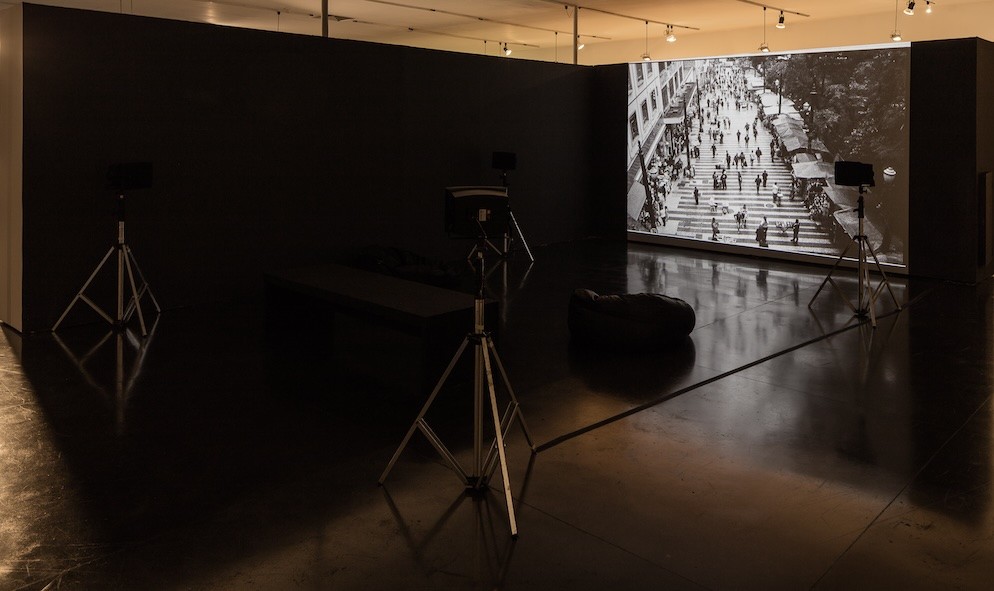Projeto
Das mais de trinta casas onde morei ao longo da vida, a do Copan, em São Paulo, foi a primeira distante do litoral. Um dia escutei que era possível ver o mar sem sair da cidade, em alguma parte ao sul, depois de Parelheiros. Por mais absurdo que pudesse soar, o relato despertou o interesse por encontrar uma paisagem quase fictícia. Assim iniciei o projeto Perabé em dezembro de 2014.
O que a princípio se tratava apenas de encontrar um mirante em São Paulo, se transformou num projeto de travessias, de atravessar a paisagem até chegar à Baixada Santista. Em viagens periódicas ao longo de 10 meses, percorri diferentes caminhos que pudessem conectar a capital paulista ao litoral, coletando as impressões em fotografias e textos. Partindo da Serra da Cantareira, deixei-me guiar por personagens, mitos, histórias e acasos, até chegar ao bairro de Marapé (antigo Perabé), em Santos, que em tupi significa “caminho do mar”.
A videoinstalação é composta por fotografias em p/b que remontam uma possível travessia e um áudio narrado a quatro vozes com o texto escrito por mim.
Project
Of the more than thirty houses that I have lived in throughout my life, the one in Copan, in São Paulo, was the first one far from the coast. One day I heard that it was possible to see the sea without leaving the city, somewhere to the south, after Parelheiros. As absurd as it might sound, the report aroused my interest in finding an almost fictitious landscape. So I started the Perabé project in December 2014.
What at first was only about finding a viewpoint in São Paulo, became a project of crossings, of traversing the landscape until reaching the Baixada Santista. In periodic trips over 10 months, I traveled different paths that could connect the São Paulo capital to the coast, collecting the impressions in photographs and texts. Starting from the Cantareira Mountains, I let myself be guided by characters, myths, stories, and accidents until I reached the Marapé (formerly Perabé) neighborhood in Santos, which in Tupi means "way of the sea".
The video installation is composed of b/w photographs that retrace a possible crossing and an audio narrated in four voices with the text written by me.
Revista Escrita 23, PUC Rio 2017
Cat. expo Prêmio Pipa 2016
Deslocamento/Displacement, Caixa - Sala Prêmio Instituto, 2017
Finalistas Prêmio Pipa (aquisição coleção Instituto Pipa)
MAM Rio
03.09 - 13.11.2016
III Mostra do Programa de Exposições 2015
(text. Ana Luisa Lima)
Centro Cultural São Paulo 14.11.2015 - 06.03.2016









